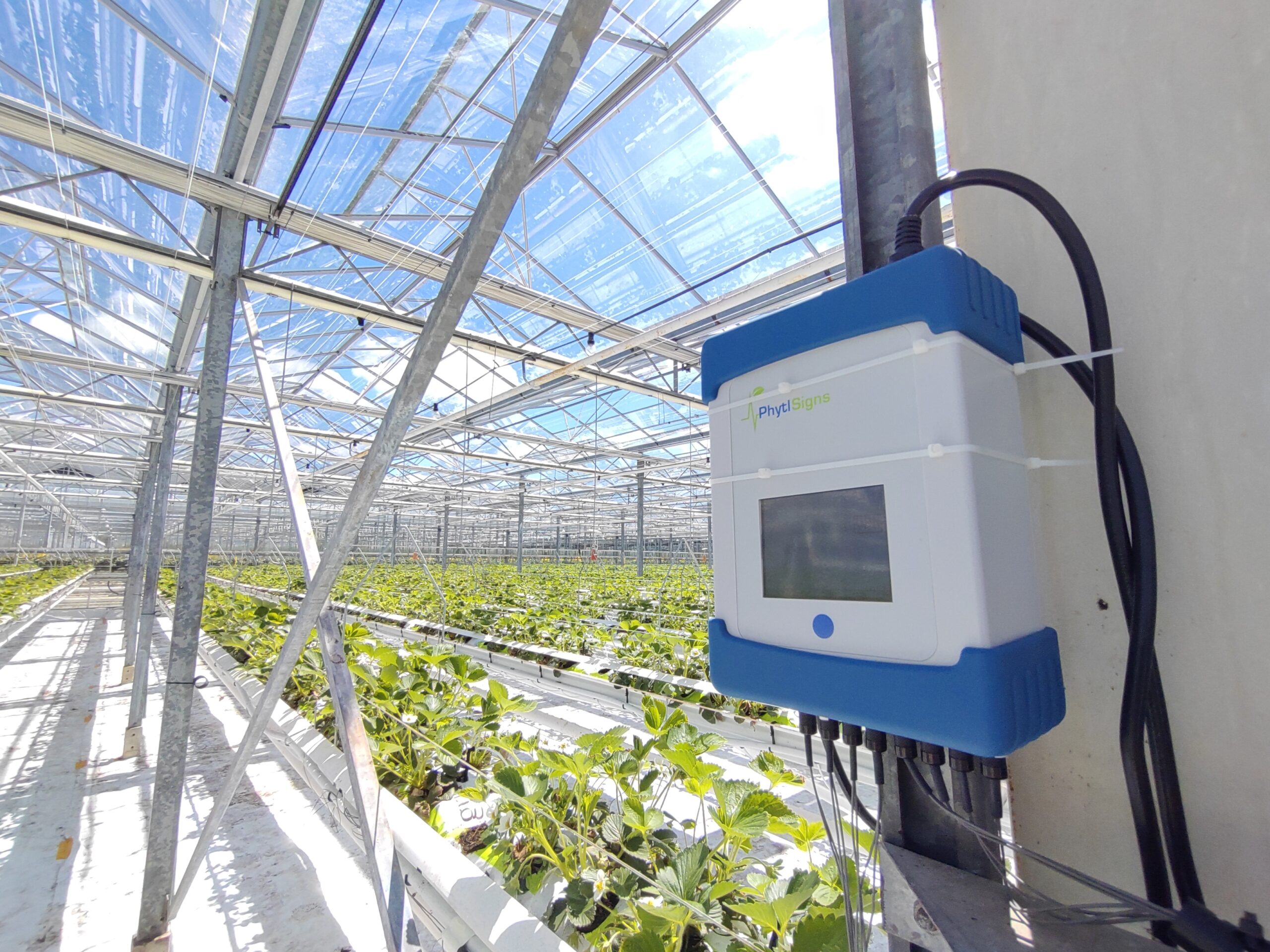
”
Most people don’t know that plants use networks to share information
”
Crops are communicating. By decoding their information, we can feed the world more sustainably. By Carrol Plummer, Co-founder and CEO of Vivent SA

Today’s agricultural practices are inefficient and unsustainable. Food production and agriculture currently account for more than one-quarter of global greenhouse gas emissions, consume half of all inhabitable land, and contribute to 70% of freshwater withdrawals.
One way to feed the planet is to continuously measure crop health and respond to crop stress as it happens. That allows each plant to deliver optimal yields while conserving limited natural resources.
Taking it one plant at a time
Measuring plants themselves rather than the environment around them is enabling new agriculture innovations. For example, the World Economic Forum recently identified “wearables for plants” as one of the Top 10 emerging technologies of 2023. By improving plant health, these wearable sensors will help increase food production in order to meet the roughly 70% increase in global food demand expected by 2050.
Monitoring crop health in real-time requires widespread digital infrastructure, such as 5G or LoRa wireless networks. It also requires access to cheap, cloud-based data storage and computing solutions, AI and advanced analytics, and intelligent sensors.
My company, Vivent SA, based in Switzerland, is rising to meet these challenges.
Most people don’t know that plants use sophisticated networks based on electrical signals to gather and share information. These communications usually take place in response to changes in the environment: shifts in the level of water or nutrients in the soil; changes in ambient light, temperature, or humidity; or the presence of diseases, fungal infections, or insects both above and below the ground.
Vivent has developed hardware and software to record and transmit these signals continuously, monitoring crops around the clock so farmers can respond quickly to environmental stressors, sometimes days before plants show any visual signs of distress.
How it works
Step 1. We connect to plants in a field or greenhouse by inserting micro-needles in living tissue at two locations on a plant’s stem. Depending on the crop, the electrodes can stay in place for weeks, months, or even years. We capture signals emitted by the plants throughout the entire crop cycle.
Step 2. The signals are transmitted to Vivent’s cloud, where they are processed and analyzed. We use this analysis to create value for our clients.
Step 3. In addition to alerting farmers when crops are stressed, Vivent provides regular reports on crop health and identifies the causes of lost productivity. We also offer customised tips to farmers on optimizing growing conditions based on their crops and operations.

Decoding the secret life of plants with AI
The electrical signals that Vivent records were discovered more than 120 years ago, when Charles Darwin brought Venus flytrap plants from the US to the UK. Jagadir Chandra Bose, an Indian scientist, discovered plant signals. These were so complex that, at the time, Bose and others had no way to interpret them.
Today, scholars such as Edward Farmer at the University of Lausanne have successfully characterized plant signals, showing, for instance, that certain electrical transmissions are linked to the wounding of plant leaves.
This information provided the steppingstone Vivent needed to begin decoding the signals.
Machine learning has enabled Vivent’s data scientists to build algorithms to detect specific stressors. We measure healthy plants and those exposed to a specific stimulus, such as a fungal infection or the application of a biostimulant (a biologically active crop treatment that arouses a plant’s immune system).
We then look for signal characteristics that differentiate two or more groups of plants and alert growers when plants start responding to environmental stimuli. These early warnings of crop stress allow farmers to choose more sustainable solutions.
For instance, farmers can apply a biostimulant that encourages a plant to activate its defenses against an emerging insect attack. If the insect population remains low, then the farmer does not need to treat the crop with a pesticide. This saves money and reduces the need to apply potentially toxic chemicals that could pollute the environment.
The power of advanced ICT
By harnessing the power of advanced technologies such as IoT, data analytics, and smart systems, Vivent is helping farmers gain a deeper understanding of their crops. Among other benefits, our solutions enable efficient management of irrigation water, reduced environmental impacts from improper use of pesticides or fertilizers, and 24/7 crop health monitoring.
Good-quality data infrastructure and strong support for R&D are key to bringing more innovation to the food supply chain. Vivent is proud to be part of an ecosystem that will enable everyone to have access to sustainably grown, healthy, and delicious food.




